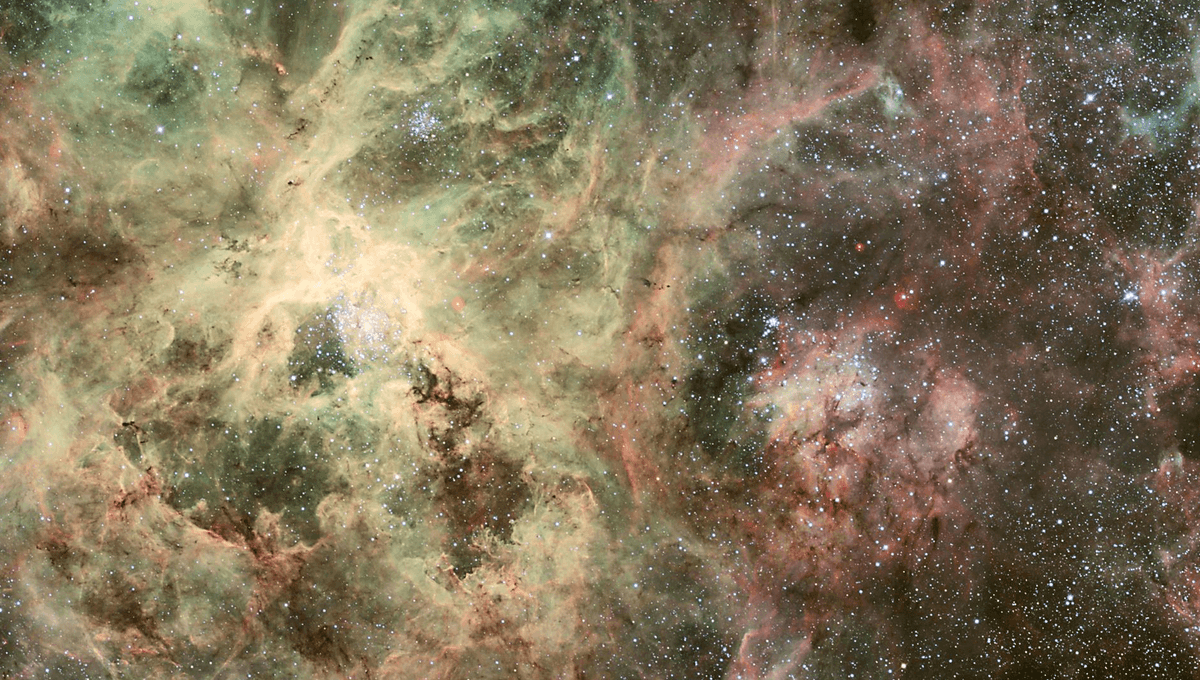
If you Google “what is the largest star” you’ll probably get the answer UY Scuti, but if it was as simple as that we wouldn’t be adding much value here. Fortunately, the universe is a more interesting place than that, so let’s explore a bit deeper.
The largest star
It might seem easy to find the largest star, but a moment’s thought reveals the problem. The stars are at different distances, and they don’t come with signs identifying how far away they are. If a star looks large to us, we have to work out if it really is, or if it’s just in our neighborhood. The star with the greatest angular diameter from Earth, that is the one that takes up the largest portion of our sky, is of course the Sun, but it is far from exceptionally large, merely very close.
The next greatest angular diameter belongs not to Betelgeuse, as sometimes reported, but R Doradus, which has achieved obscurity despite its great size by hiding out in the far southern skies.
Nevertheless, Betelgeuse represents a good example of the problems of measuring star sizes.
Even its angular diameter, which one might think would be the easy aspect to measure, is open to a lot of debate. Measurements of Betelgeuse’s angular diameter this century have ranged from 42 milliarcseconds to 48 (mas). As recently as the 1990s, some estimates were twice as large. Even the same astronomers have produced quite varied estimates on different occasions.
Combined with disagreements about how far away Betelgeuse is, this means that we don’t have a reliable estimate for the size of the most famous supergiant star, one of the brightest in the sky (well usually). That makes it easier to understand why we have such trouble with fainter and more distant objects.
The challenge in estimating the angular diameter of a star is that the boundary between the star itself and the atmosphere around it can be very hard to determine On top of this, when stars become red giants, puffing them up to their largest size, they pulse so this size varies.
Some stars at least make the job of measuring distance easier by being located in star clusters or galaxies whose distances we have accurate methods to measure.
With all those caveats, UY Scuti is estimated to have a radius 1,700 times greater than the Sun, making its volume some 5 billion Suns. Despite the uncertainties in measurements, that probably puts it safely above WOH G64, estimated at 1,540 solar radii. When it comes to size estimates, WOH G64 has the advantage of being in another galaxy, the Large Magellanic Cloud, so we have plenty of markers for its distance.
The notable thing about these behemoths (besides the whole concept of stars with a circumference greater than the orbit of Jupiter) is that some studies estimate the maximum theoretical radius for a star is 1,500 solar radii. Just another one of the puzzles of the universe we have yet to resolve.
The most massive star
A star’s size is good for wow value, but it’s a temporary trait, one that passes quickly as the giant stage passes. Mass, on the other hand, is perhaps a star’s most important feature. True, it changes as well; large stars produce such powerful stellar winds they can lose mass quickly. Nevertheless, a star’s initial mass defines it. The more massive the star, the shorter its life span as they burn through mass much more quickly, and making it much brighter while it survives. A star’s mass also determines if it will end its life as a supernova, or reach a less spectacular end.
The current suspect for the most massive known star is BAT99-98 (which probably needs a publicist to give it a better name). It’s been estimated at 226 solar masses, which poses even more problems for theoretical models of stellar evolution than the overly large stars.
The limit to star mass depends on composition. Stars in the early universe are thought to have reached truly enormous sizes, with estimates in the thousands of solar masses. However, that was back when stars were formed from hydrogen and helium alone. As those first stars have died and distributed heavier elements around their galaxies, modern stars have more mixed compositions.
Gas clouds containing a mix of elements break up into multiple stars, rather than forming into such giants, so we don’t expect to find stars with more than 150 solar masses in the local universe. Although BAT99-98 stands out, well above any other local star we have measured, it is noticeable that most of the other really heavy stars we know are also not in our own galaxy, but in the Large Magellanic Cloud. Specifically, most of them, BAT99-98 included, are in the Tarantula Nebula, a giant star-forming region that dwarfs any counterpart in the Milky Way, and seems to go in for making truly phenomenal stars.
Source Link: What Is The Largest Star Ever Found – And The Most Massive?